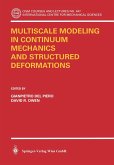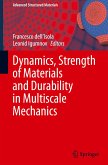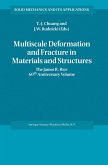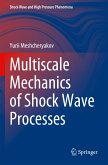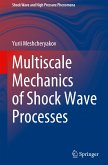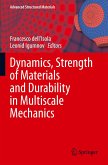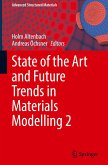This book offers the proceedings of Euromech colloquium 642, which wanted to provide a forum to present and debate several advanced computational, experimental, and analytical methods for studying the behaviour of complex materials and structures. The goal was to gather researchers (engineers, physicists, and mathematicians) specialized in multiscale material modelling for simulating the mechanics of solids and the physics of matter with the final aim of bridging the gap between solids and structural mechanics and material science in the modelling of "complex" materials. Both computational and experimental aspects play a central role, and talks have also focused on a broad range of aspects either related to the material modelling or the structural one.
Various types of complex materials, made of very different constituents, are used nowadays in engineering practice: particle or fibrous composites; laminates; green composites with natural fillers and industrialor urban recyclable materials; nanomaterials; architecture material; in general complex multiphase materials with a complex internal structure including: porosity, reinforcement in the form of short fibres and particles of various properties, shapes, and sizes, filled in different media. It is widely recognized that important macroscopic properties such as the macroscopic stiffness and strength are governed by multiphysics processes (e.g. damage due to heat transfer or fluid penetration, crack propagation under thermal shock in ceramic/metallic matrix composites, etc.) which occur at one to several scales below the level of observation. A thorough understanding of how these processes influence the reduction of stiffness and strength is a key to the analysis of existing, and the design of improved, complex materials. The colloquium was centred on "Multiscale and Multiphysics Modeling of Complex Materials", with attention to the constitutive aspects concerning complex materials, sodefined for the presence of internal structure at different scales (nano/micro/meso) and nonlinear constitutive behaviour (plasticity, damage, fracture, etc.).
Various types of complex materials, made of very different constituents, are used nowadays in engineering practice: particle or fibrous composites; laminates; green composites with natural fillers and industrialor urban recyclable materials; nanomaterials; architecture material; in general complex multiphase materials with a complex internal structure including: porosity, reinforcement in the form of short fibres and particles of various properties, shapes, and sizes, filled in different media. It is widely recognized that important macroscopic properties such as the macroscopic stiffness and strength are governed by multiphysics processes (e.g. damage due to heat transfer or fluid penetration, crack propagation under thermal shock in ceramic/metallic matrix composites, etc.) which occur at one to several scales below the level of observation. A thorough understanding of how these processes influence the reduction of stiffness and strength is a key to the analysis of existing, and the design of improved, complex materials. The colloquium was centred on "Multiscale and Multiphysics Modeling of Complex Materials", with attention to the constitutive aspects concerning complex materials, sodefined for the presence of internal structure at different scales (nano/micro/meso) and nonlinear constitutive behaviour (plasticity, damage, fracture, etc.).


